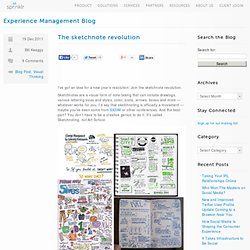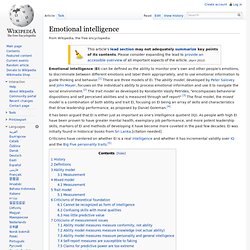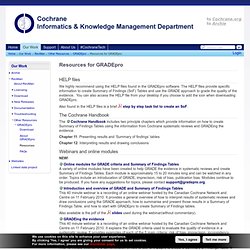

iPad. Note-taking. Designing conference posters » Colin Purrington. A large-format poster is a big piece of paper or wall-mounted monitor featuring a short title, an introduction to your burning question, an overview of your novel experimental approach, your amazing results in graphical form, some insightful discussion of aforementioned results, a listing of previously published articles that are important to your research, and some brief acknowledgement of the tremendous assistance and financial support conned from others — if all text is kept to a minimum (less than a 1000 words), a person could fully read your poster in 5-10 minutes.

Section content • DOs and DON’Ts • Adding pieces of flair • Presenting • Motivational advice • Software • Templates • Printing • Useful literature • Organizing a poster session What to put in each section Below, I’ve provided rough tips on how many words each of these sections might have, but those guesses are assuming you have a horizontal poster that is approximately 3×4′. Adjust accordingly. DOs and DON’Ts 1. 2. 3. GTD_flow.jpg (Image JPEG, 1051x1630 pixels) G.T.D - Next Action Analysis - Process... Visual Thinking. Mind Mapping. The sketchnote revolution « Dachis Group Collaboratory. I’ve got an idea for a new year’s resolution: Join the sketchnote revolution.

Sketchnotes are a visual form of note-taking that can include drawings, various lettering sizes and styles, color, icons, arrows, boxes and more — whatever works for you. I’d say that sketchnoting is officially a movement — maybe you’ve seen some from SXSWi or other conferences. And the best part? You don’t have to be a creative genius to do it. It’s called Sketchnoting, not Art School. But these sketchnotes are pretty great.
We all go to conferences. Enter sketchnotes. Bibliothèques de cartes heuristiques en ligne. Experts. Emotional intelligence. Emotional intelligence (EI) can be defined as the ability to monitor one's own and other people's emotions, to discriminate between different emotions and label them appropriately, and to use emotional information to guide thinking and behavior.[1] There are three models of EI.

The ability model, developed by Peter Salovey and John Mayer, focuses on the individual's ability to process emotional information and use it to navigate the social environment.[2] The trait model as developed by Konstantin Vasily Petrides, "encompasses behavioral dispositions and self perceived abilities and is measured through self report" [3] The final model, the mixed model is a combination of both ability and trait EI, focusing on EI being an array of skills and characteristics that drive leadership performance, as proposed by Daniel Goleman.[4] It has been argued that EI is either just as important as one's intelligence quotient (IQ).
History[edit] Definitions[edit] Ability model[edit] Big Five personality traits. In psychology, the Big Five personality traits are five broad domains or dimensions of personality that are used to describe human personality.

The theory based on the Big Five factors is called the five-factor model (FFM).[1] The five factors are openness, conscientiousness, extraversion, agreeableness, and neuroticism. Acronyms commonly used to refer to the five traits collectively are OCEAN, NEOAC, or CANOE. Beneath each global factor, a cluster of correlated and more specific primary factors are found; for example, extraversion includes such related qualities as gregariousness, assertiveness, excitement seeking, warmth, activity, and positive emotions.[2]:24 The Big Five model is able to account for different traits in personality without overlapping. Empirical research has shown that the Big Five personality traits show consistency in interviews, self-descriptions and observations.
§Five factors[edit] Openness to experience: (inventive/curious vs. consistent/cautious). GRADE working group. The Cochrane IMS. Table of Contents — December 20, 2011, 155 (12) Resources for GRADEpro. HELP files We highly recommend using the HELP files found in the GRADEpro software.

The HELP files provide specific information to create Summary of Findings (SoF) Tables and use the GRADE approach to grade the quality of the evidence. You can also access the HELP file from your desktop if you choose to add the icon when downloading GRADEpro. Also found in the HELP files is a brief step by step task list to create an SoF. The Cochrane Handbook The Cochrane Handbook includes two principle chapters which provide information on how to create Summary of Findings Tables using the information from Cochrane systematic reviews and GRADEing the evidence.
Chapter 11: Presenting results and ‘Summary of findings’ tables. Infectious diseases/ microbiology. Home - Public Health Image Library (PHIL) History of Vaccines — A Vaccine History Project of The College of Physicians of Philadelphia. Top 10 Worst Anti-Science Websites. Vaccines. In western countries, wild type polio is no longer a problem but it is still found in some less developed countries such as Nigeria, Pakistan, Afghanistan and India (figures 4, 5 and 6).

Until the 1950s, when anti-polio vaccination became routine, summer outbreaks of polio were common in western countries, often spread via the oral-fecal route while using swimming pools. These outbreaks led to widespread paralytic polio that necessitated help in breathing and the use of "iron lungs" (figure 7). See also Picornaviruses Vaccines There are two types of polio vaccine, both of which were developed in the 1950s.
A second vaccine was developed by Albert Sabin. The attenuated Sabin vaccine, however, came with a problem: back mutation. The vaccinee who has received killed Salk vaccine still allows wild type virus to replicate in his/her gastro-intestinal tract, since the major immune response to the injected killed vaccine is circulatory IgG. Current recommendations concerning polio vaccines.